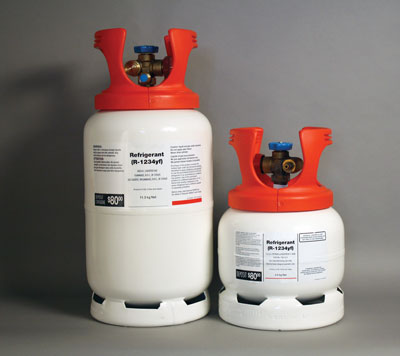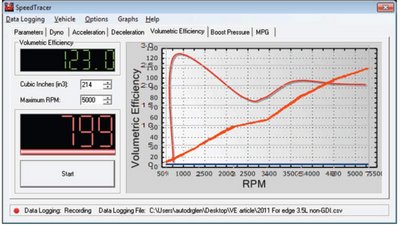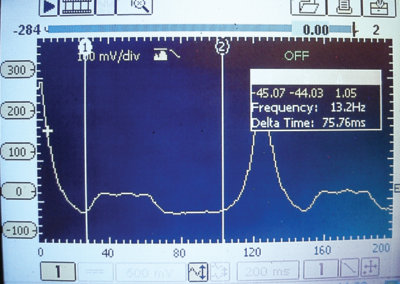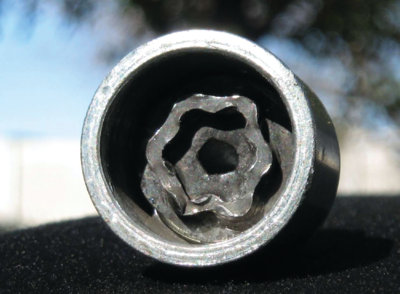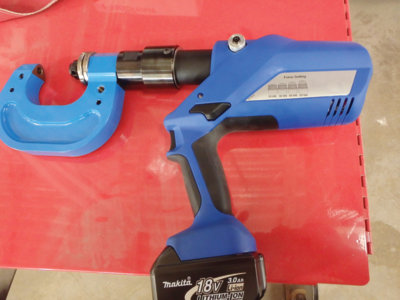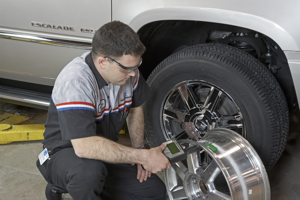 As one of the pioneers driving the cordless revolution, Makita changed the game with its breakthrough LXT Series. Now, Makita continues to expand its best-in-class 18V LXT Series of cordless industrial quality power tools featuring Makita’s industry-leading 18V LXT Lithium-Ion battery technology. Three years after its debut, Makita’s LXT Series has grown from seven to 31 tools, providing a wide range of cordless solutions for professional tradesmen.
As one of the pioneers driving the cordless revolution, Makita changed the game with its breakthrough LXT Series. Now, Makita continues to expand its best-in-class 18V LXT Series of cordless industrial quality power tools featuring Makita’s industry-leading 18V LXT Lithium-Ion battery technology. Three years after its debut, Makita’s LXT Series has grown from seven to 31 tools, providing a wide range of cordless solutions for professional tradesmen.
“After three full years on jobsites across America, professional users are experiencing the advantages of using the industry’s first 18V Lithium-Ion battery technology,” said Ken Hefley, senior vice president of marketing. “The Makita LXT solution is jobsite proven and delivers more work, less weight and better engineering. With 31 tools in the series, Makita’s LXT allows the pro user to work longer with a better engineered tool, with a broad range of power tool solutions to choose from the same platform."
Makita’s growing line of LXT cordless tool solutions features a wide range of industrial-quality power tools, including driver-drills, impact drivers, impact wrenches, saws, grinders, screwguns, rotary hammers and more. The LXT Series also offers a jobsite radio, rechargeable flashlights and several different combo kits.
“Three years ago Makita created the 18V Lithium-Ion category,” said Hefley. “Pro tradesmen needed more power and less weight, and Makita’s 18V Lithium-Ion battery technology delivered longer run time, a 30-minute charge time, and a superior power-to-weight ratio. It’s the ‘sweet spot’ in battery technology, and we will continue to make tools for this platform.”
Makita’s 18V Lithium-Ion Battery Technology is powered by its patented Rapid Optimum Charging System. The Rapid Optimum Charger produces 430% total lifetime work with two-and-a-half times more battery cycles when compared to traditional 18V Ni-Cd batteries. The Rapid Optimum Charger is ENERGY STAR rated for its charging efficiency, and will charge a Makita LXT Lithium-Ion battery in just 30 minutes and a Makita Compact Lithium-Ion battery in only 15 minutes.
“With 31 tools and three full years on jobsites across America, there’s never been a better time to dump the old and get the new,” said Brent Withey, Makita senior brand manager. “Makita’s LXT Series is truly best-in-class for cordless industrial power tools.”
OVERVIEW: Makita’s 18V LXT Lithium-Ion Cordless Tool Series
Makita’s LXT Series has been designed specifically for Lithium-Ion battery technology with less weight in a more compact size. The ergonomic shape fits comfortably in the user’s hand with even pressure while adding more control. The LXT Series is also equipped with built-in L.E.D. lights that operate independently from the tool to illuminate the work area.
Makita LXT Lithium-Ion Batteries and Optimum Charging System produce 430% total lifetime work with two-and-a-half times more battery cycles when compared to traditional 18V Ni-Cd batteries. The Optimum Charging System is ENERGY STAR rated for its efficient charging process. Makita’s LXT Lithium-Ion batteries provide the pro user with many benefits, including 2,000 battery life cycles, longer run time, 40% less weight, five-times lower self-discharge to keep cells active and ready to use any time, a built-in memory chip to communicate with the Optimum Charger for more work, built-in shock absorbing features to protect the battery, and sixteen firm-holding contact terminals for constant high power. The battery works in conjunction with the Optimum Charger during the charging process for a more efficient charge and maximum battery life.
The new Rapid Optimum Charger communicates with the LXT battery throughout the charge cycle using the built-in memory chip in the battery and the built-in CPU chip in the charger to recognize the history and battery condition to select the optimal charging method. The optimal charging method uses Active 3 Controls for current control, thermal control and voltage control. The charger has a built-in fan to cool the battery to produce more lifetime work.
Compact Lithium-Ion Products
Makita has also added compact cordless power tools to its line of Lithium-Ion products, and they are unique in both appearance and performance: The 18V Compact Lithium-Ion battery weighs just .85 lbs. and reaches a full charge in only 15 minutes, four times faster than the competition.
The compact battery combined with the compact design of the tools delivers a superior power-to-weight ratio. These compact tools – including the 1/2” Compact Driver Drill (BDF452HW), compact impact driver (BTD142HW) and various combo kits – feature a black and white trade dress, distinguishing these compact cordless models from Makita’s familiar teal-colored cordless product in the LXT Series.
Makita’s newest cordless compact products are powered by a 10.8V Lithium-Ion battery. These lower-voltage products clearly have a place in Makita’s series of Lithium-Ion cordless tools.
“Makita’s Lithium-Ion platform is not solely focused on 18V power, as evidenced by the recent launch of our 10.8V Lithium-Ion ultra-compact tools,” said Brad Wheeler, product manager – cordless products. “Makita applies power, precision and compact design to every tool it makes, and these same qualities have been built into the new 10.8V Lithium-Ion 2-speed driver-drill and impact driver. These ultra-compact tools have been engineered for trades that require professional power and quality in a convenient size, like pro service applications – while our LXT Series targets top construction applications.”
The new 10.8V products fill a need for Lithium-Ion battery power in an ultra-compact size. They are positioned as a first step into the Lithium-Ion battery platform from older battery technologies.
“For those pros using 9.6 and 12 volt tools every day – and there are many of them – Makita’s new ultra-compact 10.8V Lithium-Ion line of tools is a great way to step into Makita and experience the superior advantages of Makita Lithium-Ion power.” said Wheeler. “While our LXT Series targets top construction applications, Makita’s new 10.8V Compact tools are ideal for professional service applications. Every tool box should have one.”
Warranty
Makita LXT Lithium-Ion is backed by Makita’s new Three-Year Warranty which covers repair due to defective materials or workmanship up to three years from the purchase date.
For more information, contact us at 1-800-4-MAKITA (1-800-462-5482) or visit the website at makitatools.com.


